Bigger Forearms Than Biceps: How to Fix
While most weightlifters see having large forearms as a plus - it can often be a point of concern when viewing the arm as a whole, as it is entirely possible for the size of said forearms to eclipse the rest of the arm.
Fortunately, having forearms that are proportionally bigger than the biceps is a rather common issue, and one that is resolved with only a few tweaks in training programming.
For the most part, having bigger forearms than your biceps is simply because your training program places more emphasis on the forearms. To correct this, all that is needed is to swap out the exercises in your training program.
Why are Your Forearms Bigger Than Your Biceps?
Before diving into what exercises are causing the forearms to be larger than the biceps, it’s important to understand why these exercises do so - and whether disproportionate forearms are actually an issue or not.
Anatomy of the Forearms and Biceps
The forearms feature as many as 19 skeletal muscle groups - vastly outnumbering the single muscle group that is the biceps.
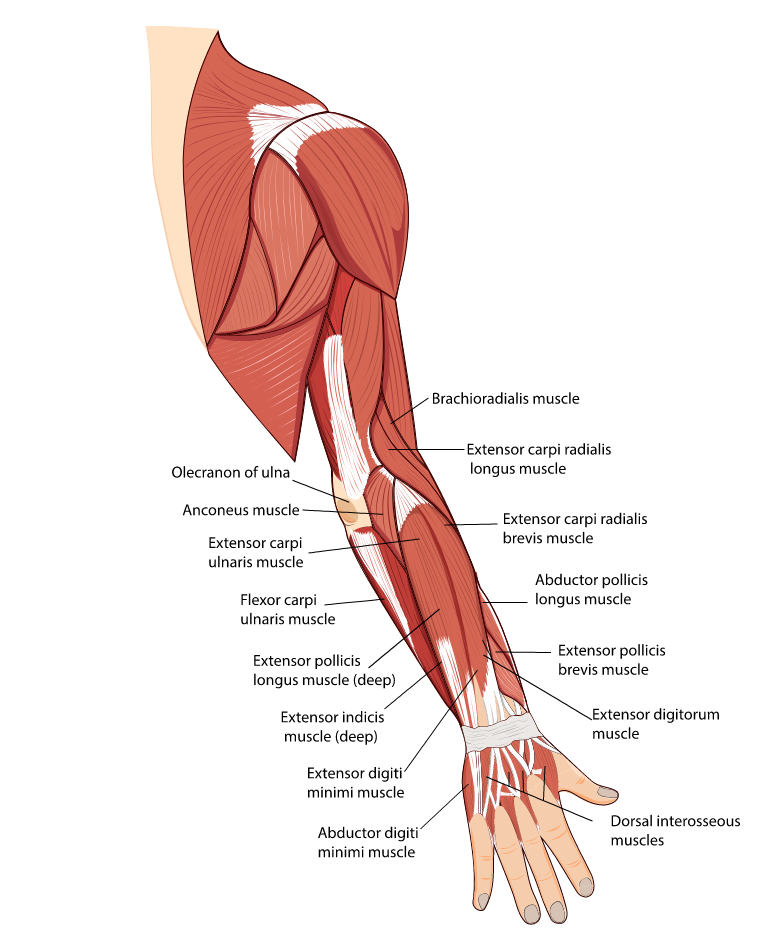
However, in terms of gross muscle mass, it is only the brachioradialis portion of the forearm that comes even close to rivaling the biceps. One can effectively disregard the majority of the forearm muscles when considering pure muscular size.
As such, it becomes more of a comparison between the size of the brachioradialis (below) and the biceps - both of which may work in tandem, but are emphasized by vastly different mechanics.
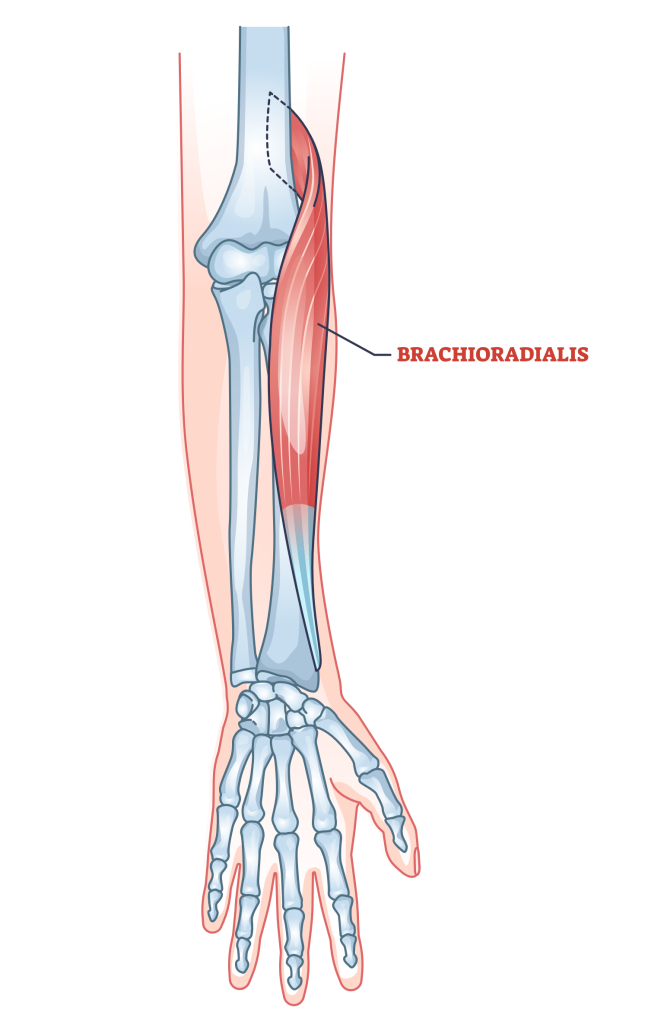
The brachioradialis is recruited to the greatest extent during elbow flexion, with the hands in a neutral grip - whereas the biceps are worked the most during elbow flexion with an underhand grip.
This is the reason why exercise selection is important for correcting disproportionate forearms and biceps, as exercises like the hammer curl, farmers walk and neutral-grip pull-up will all cause the brachioradialis to “outgrow” the biceps.
Are Disproportionate Forearms and Biceps a Bad Thing?
In truth, there is nothing physiologically wrong with having greater muscle mass in the forearms. The two muscle groups do not conflict, and will in fact work in a synergistic manner - meaning that it is unlikely a muscular imbalance or connective tissue condition will occur as a result of disproportionate arm muscles.
However, this is not so much the case for bodybuilders, as having larger forearms than the upper arm will create a less aesthetically appearing upper body, and make the upper arms appear even smaller in comparison.
As such, while having bigger forearms than biceps is not quite a medical issue, it can indeed be a problem for competitive bodybuilders or fitness models who rely on proportionality to accentuate their physical appearance.
Culprit Exercises Behind Having Bigger Forearms Than Biceps
As was touched upon in the previous section of this article, the exercises most likely to result in disproportionate forearm mass are those that target the brachioradialis or the forearms as a whole, rather than the biceps.
Unless the exercise is specifically a forearm isolation movement, it is unlikely that the lifter is even aware of this. Movements involving elbow flexion while the hands are in a neutral or overhand position are the main culprit behind overly-large forearm muscles.
Forearm Exercises to Avoid When Your Forearms are Bigger Than Your Biceps
The most common examples of such exercises are the hammer curl, neutral grip pull-up and cable rows - all of which work the brachioradialis to a greater extent than they would the biceps. However, several other forearm-centric movements may also be present in your workout, all of which should be reevaluated for the time being.
Movements like the farmer’s walk, wrist curl, reverse curl or even high-volume deadlift sets can all cause the forearms to develop out of proportion to the biceps.
How to Correct Having Bigger Forearms That are Bigger Than the Biceps
Now that we’ve established what sort of exercises make the forearms larger than the biceps, and the reason behind such growth - how do we go about fixing it?
Doing so is quite simple; stop performing exercises that cause the forearms to undergo muscular hypertrophy, and instead switch them out with exercises that focus on the biceps instead.
Doing so will ensure that the biceps continue to grow while the forearms remain the same size, making it a matter of time until their proportions are reversed.
How to Emphasize the Biceps More in Training
Apart from adding more biceps volume into your training, a few good steps to take also include performing more compound movements that recruit the biceps as a secondary muscle, as well as reducing the amount of volume placed on the forearms (within this context, at least).
Asides from the following biceps isolation exercises, lifters wishing to correct their forearm/biceps imbalance may wish to look into exercises like the chin-up and barbell row - both of which work the biceps in a manner that pairs well with further isolation movements.
Best Biceps Isolation Exercises
The following are a list of exercises that can help overcome having biceps that are smaller than the forearms:
1. Bicep Curls
The classic bicep curl is the perfect exercise for correcting disproportionate arm muscles, as it solely works the biceps and is highly adjustable - allowing for exercisers of all needs and levels of experience to correct the proportion of their arms.
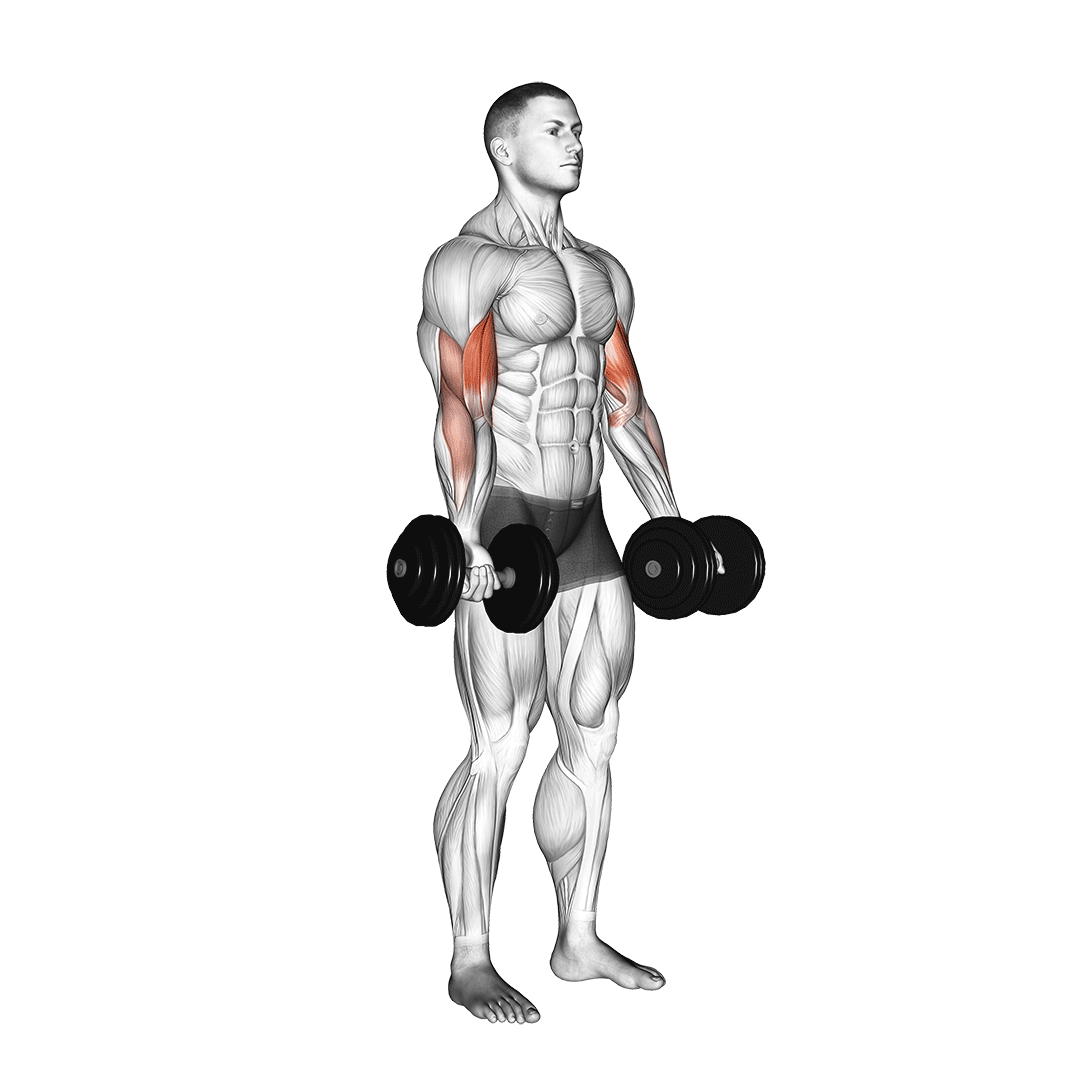
2. Preacher Curls
For exercisers that wish to maximize recruitment of the biceps while minimizing forearm involvement, the preacher curl is the next choice to consider.
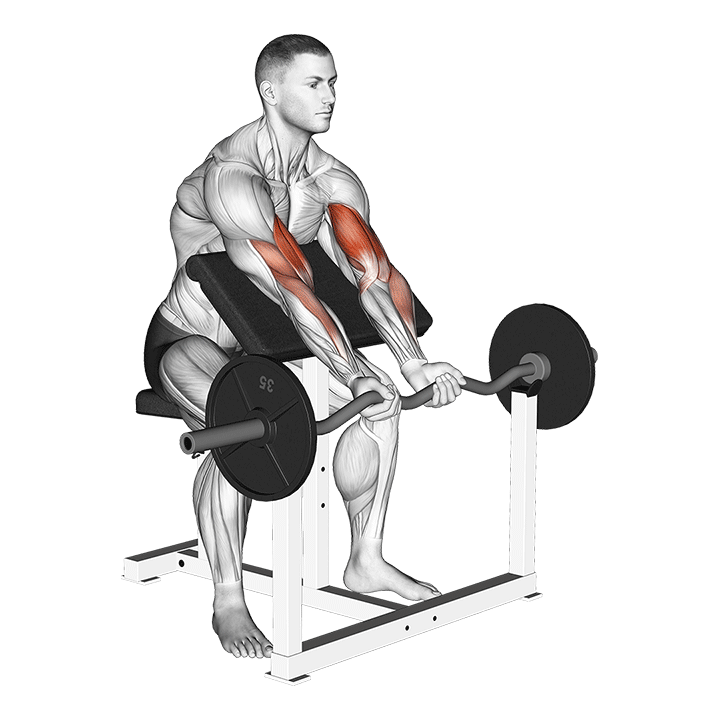
Unlike conventional bicep curls, preacher curls place the body in a position that forces the biceps to act alone, especially in an isometric capacity. This ensures that the forearms play no role in what is meant to be a biceps isolation movement, and that the hypertrophy that follows will be solely constrained therein.
3. Concentration Curls
As an alternative to preacher curls, lifters without access to a preacher bench may instead perform concentration curls - of which feature a similar range of motion and intensity, though only with one side of the body at a time.
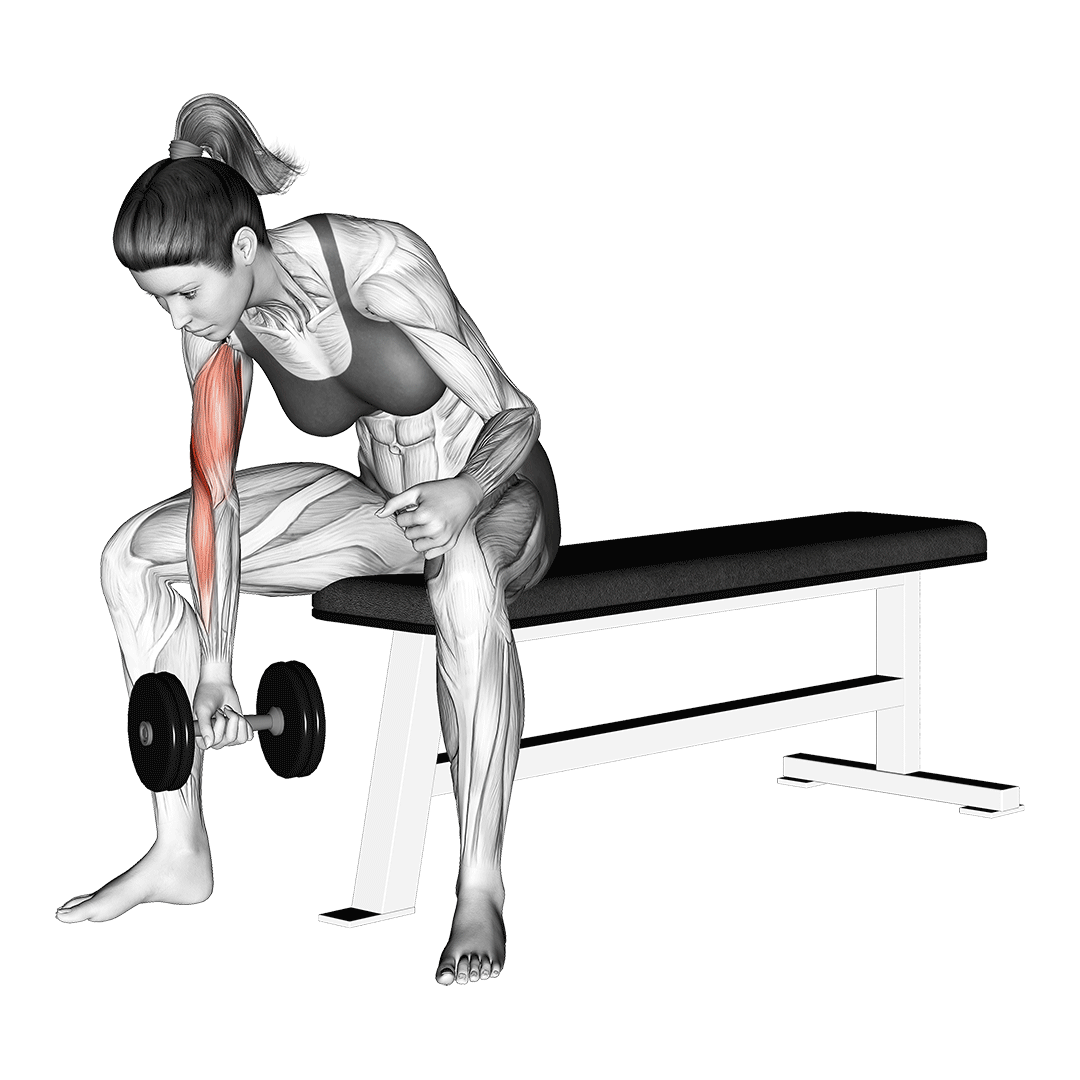
Frequently Asked Questions (FAQ)
Do Forearms Make Your Arms Look Bigger?
Yes - up to a point.
Many bodybuilders and fitness models prefer having forearms that are proportionally smaller than their upper arms, as doing so will make the entire upper body seem larger in comparison.
Why Are My Biceps Big But My Forearms Small?
The reason your biceps are larger than your forearms is simple; Your training places more emphasis on the biceps than it does on the forearms.
To correct this, include exercises like farmer’s walks, hammer curls and reverse grip curls into your training.
Are Bigger Forearms Stronger?
In part, yes - larger muscles are generally stronger than smaller ones.
However, muscular strength is not entirely dependent on the size of any given muscle, especially for muscle groups with as many individual muscles as the forearms.
To maximize the strength of your forearms, include exercises into your training that utilize high amounts of resistance and long lengths of time under tension, rather than high volume and low resistance exercises.
A few good examples are the deadlift, plate pinch and rack pull.
A Few Reminders
Keep in mind that while you are reducing the volume of training placed on your forearms, it is only temporary so as to allow the biceps to catch up.
Once the forearms and biceps are at a proportion that is to your liking, it is important to reintroduce forearm exercises back into the program.
Furthermore, growing the biceps larger than the forearms may be contingent on several other factors like genetics, diet and recovery - any one of which can also be responsible for disproportionate forearm growth.
If you’ve corrected your training program but your biceps are still smaller than your forearms, these factors may be why.
References:
1. Kleiber T, Kunz L, Disselhorst-Klug C. Muscular coordination of biceps brachii and brachioradialis in elbow flexion with respect to hand position. Front Physiol. 2015 Aug 6;6:215. doi: 10.3389/fphys.2015.00215. PMID: 26300781; PMCID: PMC4526813.
